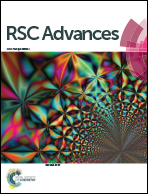In2Te3 thin films: a promising nonlinear optical material with tunable nonlinear absorption response
Abstract
A series of In2Te3 thin films with various thicknesses was prepared on fused quartz substrate using a radio-frequency magnetron sputtering method. After annealing, the surface morphology, structure and linear optical absorption of these films was investigated. By performing an open aperture Z-scan technique with femtosecond pulses under 800 nm and 400 nm wavelengths, both the sign and magnitude of nonlinear absorption coefficient can be deduced. The experimental results show that In2Te3 thin films exhibit a large and ultrafast third-order nonlinear optical absorption response. Interestingly enough, a turnover from saturation absorption to reverse saturation absorption is observed by adjusting the film's thickness. Herein, a three-level model is presented to determine the tuning behavior and the competition mechanism between ground state absorption and excited state absorption. Moreover, the ultrafast pump-probe experiment furnished evidence of a nonlinear absorption difference, which was mainly caused by the density of defect states.


 Please wait while we load your content...
Please wait while we load your content...